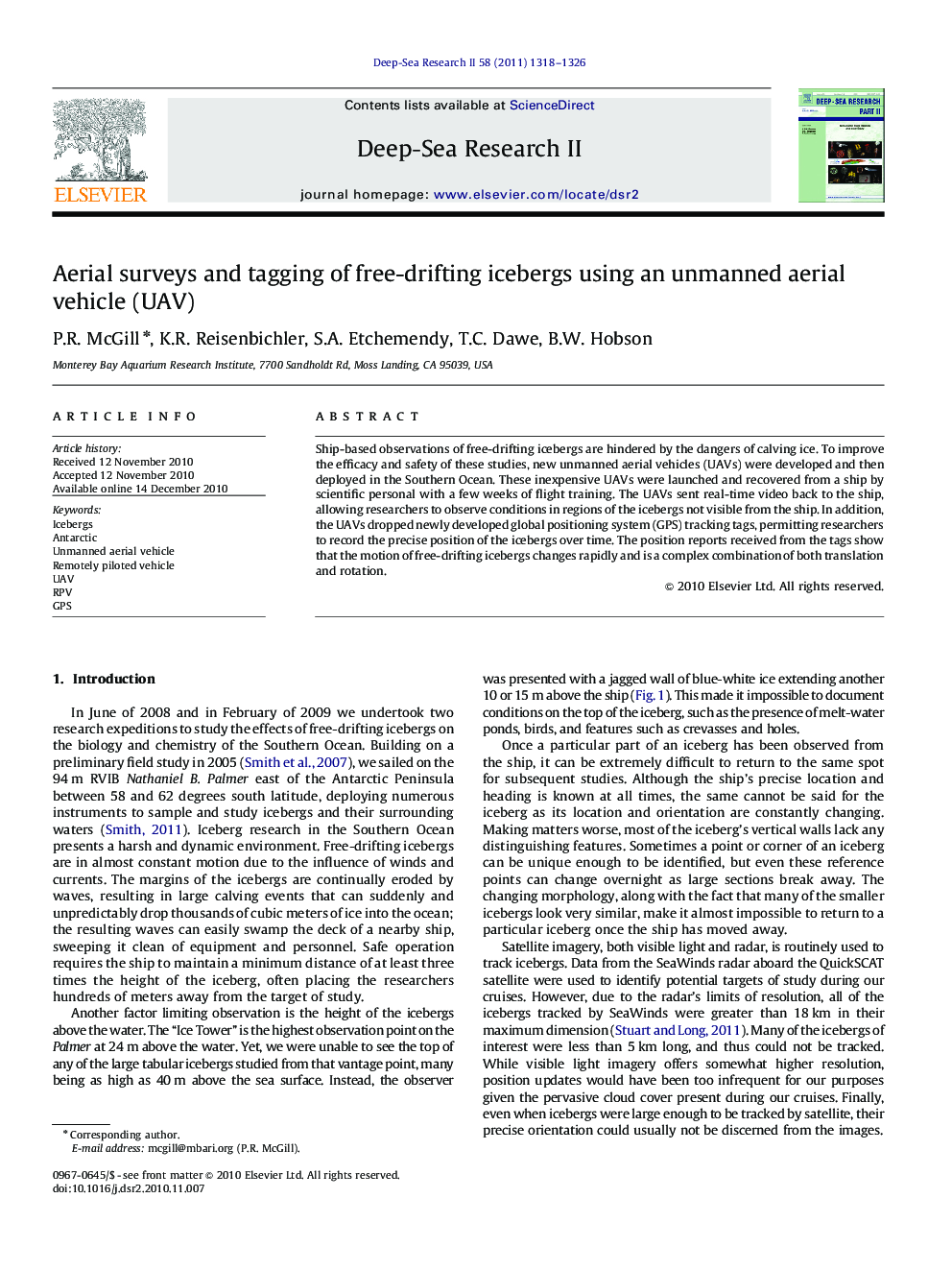| کد مقاله | کد نشریه | سال انتشار | مقاله انگلیسی | نسخه تمام متن |
|---|---|---|---|---|
| 4536866 | 1626465 | 2011 | 9 صفحه PDF | دانلود رایگان |

Ship-based observations of free-drifting icebergs are hindered by the dangers of calving ice. To improve the efficacy and safety of these studies, new unmanned aerial vehicles (UAVs) were developed and then deployed in the Southern Ocean. These inexpensive UAVs were launched and recovered from a ship by scientific personal with a few weeks of flight training. The UAVs sent real-time video back to the ship, allowing researchers to observe conditions in regions of the icebergs not visible from the ship. In addition, the UAVs dropped newly developed global positioning system (GPS) tracking tags, permitting researchers to record the precise position of the icebergs over time. The position reports received from the tags show that the motion of free-drifting icebergs changes rapidly and is a complex combination of both translation and rotation.
Journal: Deep Sea Research Part II: Topical Studies in Oceanography - Volume 58, Issues 11–12, June 2011, Pages 1318–1326